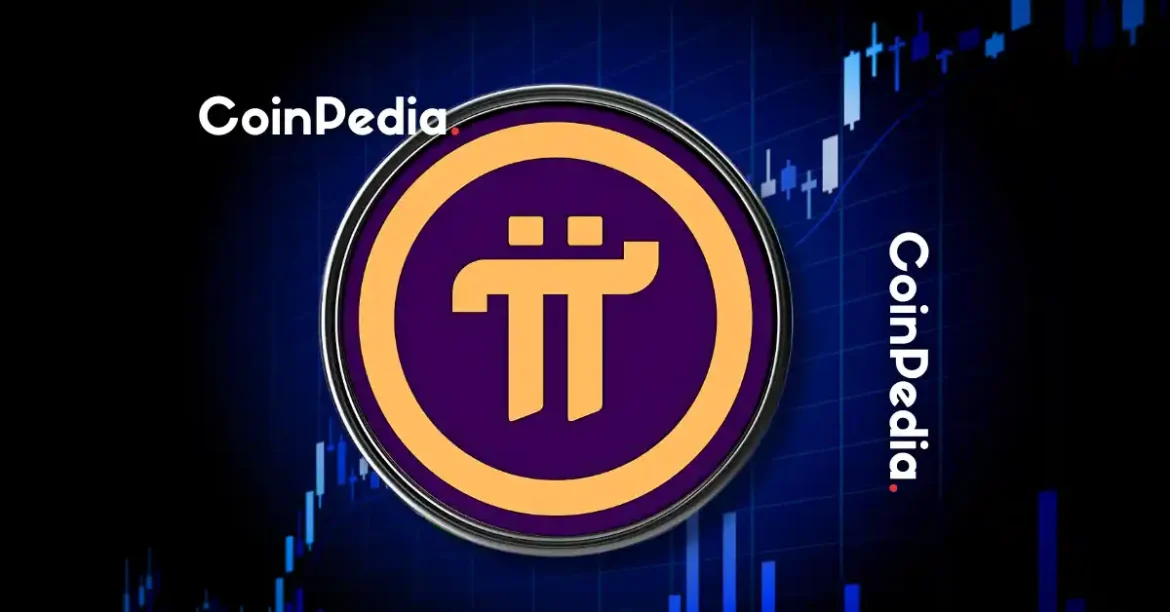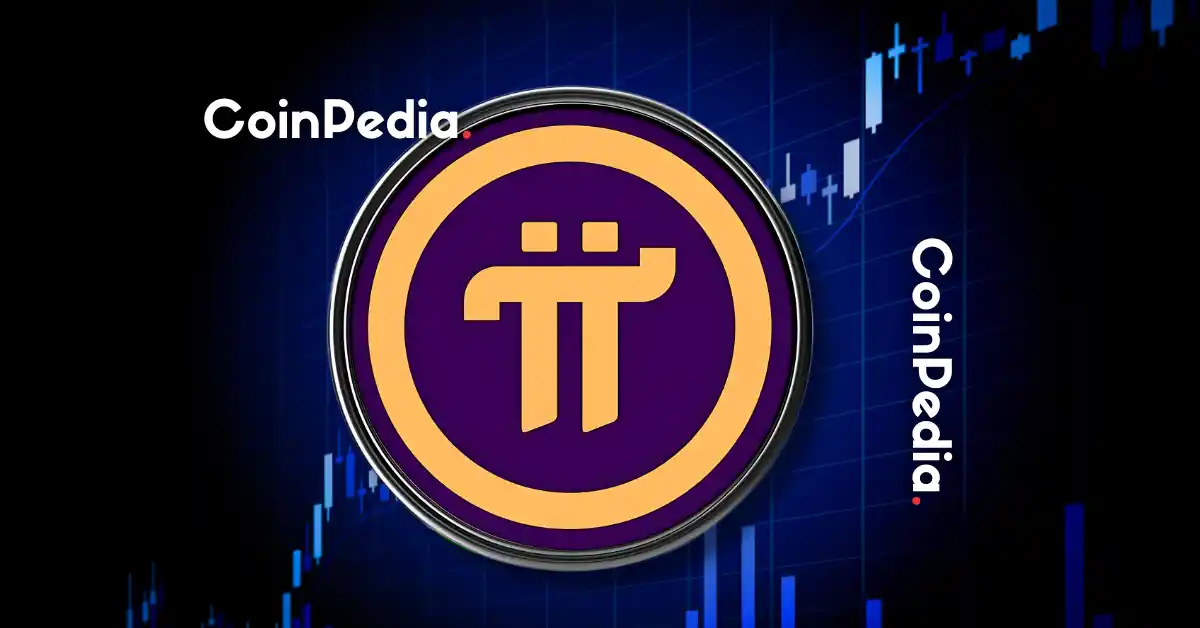The Pi Network, with its ambitious goal of creating a cryptocurrency accessible to everyone, has captured the imagination of millions. At the heart of this enthusiasm lies a burning question: can Pi realistically reach a price of $10? This report delves into the factors influencing Pi Network’s valuation, examining the technical challenges, market sentiment, and the economic realities that will determine whether this digital dream can materialize.
Understanding Pi Network: A Unique Approach to Cryptocurrency
Pi Network distinguishes itself from traditional cryptocurrencies through its mobile-first mining approach. Users can mine Pi coins directly from their smartphones, without requiring specialized hardware or consuming excessive energy. This accessibility has fueled rapid user growth, with the network boasting over 60 million users by early 2025. However, this unique model also presents challenges in terms of security, scalability, and ultimately, value.
The Pi Network’s mobile-first approach is a double-edged sword. On one hand, it democratizes cryptocurrency mining, making it accessible to a broader audience. On the other hand, the reliance on mobile devices raises concerns about security vulnerabilities and the potential for Sybil attacks, where malicious actors create multiple fake identities to manipulate the network. Additionally, the scalability of the network remains a critical factor. As the user base grows, the network must ensure that it can handle increased transaction volumes without compromising performance.
The Elusive $10 Target: Hype vs. Reality
The $10 price target has become a rallying cry for the Pi Network community. Some analysts, like Dr. Altcoin, have expressed optimism, suggesting that this milestone could be achieved once the Pi ecosystem matures, particularly with the development of advanced applications through the AI App Studio. However, a more cautious perspective prevails among other experts. Concerns about weak demand, limited utility, and the sheer volume of Pi coins in circulation cast doubt on the possibility of reaching such a high valuation.
The hype surrounding Pi Network is undeniable, but it is essential to separate this hype from reality. The $10 target is based on several assumptions, including the successful development of a robust ecosystem, widespread adoption, and significant demand for Pi coins. However, these assumptions are far from guaranteed. The cryptocurrency market is highly volatile, and many projects that initially garnered significant attention have failed to deliver on their promises.
Factors Influencing Pi Network’s Price
Several key factors will determine whether Pi Network can achieve its ambitious price target:
Utility and Ecosystem Development
The success of Pi Network hinges on its ability to create a vibrant ecosystem where Pi coins can be used for goods, services, and applications. The development of the AI App Studio is a crucial step in this direction. If developers can build compelling applications that drive demand for Pi, the price could see significant upward pressure. Without real-world utility, Pi will remain a speculative asset with limited value.
The AI App Studio represents a significant opportunity for Pi Network to differentiate itself from other cryptocurrencies. By enabling developers to create applications that leverage artificial intelligence, Pi Network can attract a diverse range of users and use cases. However, the success of the AI App Studio depends on the network’s ability to provide a robust and secure platform for developers. Additionally, the network must ensure that these applications are genuinely useful and address real-world needs.
Exchange Listings
Listing on major cryptocurrency exchanges like Binance or Coinbase could provide a significant boost to Pi’s price. This would increase liquidity, accessibility, and credibility, attracting a broader range of investors. However, exchange listings are not guaranteed and depend on Pi Network meeting the stringent requirements of these platforms.
Exchange listings are a critical milestone for any cryptocurrency. They provide a platform for trading, increase liquidity, and enhance the credibility of the project. However, securing listings on major exchanges is a challenging process. Pi Network must demonstrate a strong track record, robust security measures, and a clear roadmap for future development. Additionally, the network must comply with regulatory requirements, which can be a significant hurdle for many cryptocurrency projects.
Market Sentiment and Community Support
The Pi Network community plays a vital role in shaping the perception and value of the cryptocurrency. Strong community support, positive sentiment, and active participation can create a network effect that drives demand and adoption. Conversely, negative sentiment, internal conflicts, or a decline in user engagement could hinder Pi’s progress.
The Pi Network community is one of its strongest assets. With over 60 million users, the network has a significant base of supporters who are actively engaged in promoting and developing the ecosystem. However, maintaining this level of engagement is challenging. The network must continue to provide value to its users and address their concerns to sustain community support. Additionally, the network must manage internal conflicts and ensure that the community remains united in its goals.
Supply and Demand Dynamics
The supply of Pi coins is a critical factor influencing its price. While the exact total supply is not yet fully defined, the circulating supply will significantly impact the potential for price appreciation. If the demand for Pi fails to keep pace with the increasing supply, the price will likely remain suppressed.
The supply dynamics of Pi Network are unique. Unlike traditional cryptocurrencies, Pi coins are not pre-mined, and the total supply is not fixed. This means that the supply of Pi coins will continue to grow as more users join the network and mine coins. This dynamic creates a unique challenge for the network, as it must ensure that the demand for Pi coins keeps pace with the increasing supply. If demand fails to meet supply, the price of Pi could remain low.
Open Mainnet Launch and Network Performance
The launch of the Pi Network open mainnet is a pivotal moment that will determine its long-term viability. A successful mainnet launch, characterized by stable network performance, secure transactions, and a seamless user experience, will inspire confidence in the project and attract new users and investors. However, any technical glitches, security vulnerabilities, or scalability issues could damage the network’s reputation and negatively impact its price.
The open mainnet launch is a critical milestone for Pi Network. It represents the transition from a testnet to a fully functional blockchain network. The success of this launch will depend on the network’s ability to handle real-world transactions, ensure security, and provide a seamless user experience. Any issues during this transition could have significant consequences for the network’s reputation and price.
Potential Challenges and Roadblocks
Pi Network faces several potential challenges that could derail its journey to $10:
Centralization Concerns
Despite its decentralized aspirations, Pi Network has faced criticism regarding its level of centralization. The core team’s control over the network’s development and governance raises concerns about potential manipulation and lack of transparency. Addressing these concerns and fostering greater decentralization is crucial for building trust and credibility.
Centralization is a significant concern for any blockchain project. The Pi Network’s core team plays a crucial role in the network’s development and governance. However, this centralization raises concerns about the potential for manipulation and lack of transparency. To address these concerns, the network must implement measures to decentralize its governance and ensure that the community has a significant say in the network’s future.
Regulatory Scrutiny
As cryptocurrency adoption grows, regulatory scrutiny is also increasing. Pi Network could face challenges from regulators if it fails to comply with applicable laws and regulations, particularly regarding securities offerings, money laundering, and consumer protection. Navigating the complex regulatory landscape will be essential for Pi Network’s long-term success.
Regulatory compliance is a critical aspect of any cryptocurrency project. Pi Network must ensure that it complies with all applicable laws and regulations, particularly regarding securities offerings, money laundering, and consumer protection. Failure to comply with these regulations could result in significant legal and financial consequences for the network.
Competition from Other Cryptocurrencies
The cryptocurrency market is highly competitive, with thousands of projects vying for attention and investment. Pi Network must differentiate itself from the competition by offering unique value propositions, addressing unmet needs, and building a strong competitive advantage.
The cryptocurrency market is saturated with thousands of projects, each offering unique value propositions. Pi Network must differentiate itself from the competition by offering a unique value proposition that addresses unmet needs and provides a strong competitive advantage. This differentiation is crucial for attracting users and investors and ensuring the network’s long-term success.
Scalability Limitations
As the Pi Network grows, it must address potential scalability limitations. The network must be able to handle a large volume of transactions without compromising speed, security, or cost-effectiveness. Failure to scale effectively could lead to network congestion, transaction delays, and a poor user experience.
Scalability is a critical challenge for any blockchain network. As the Pi Network grows, it must ensure that it can handle increased transaction volumes without compromising speed, security, or cost-effectiveness. Failure to scale effectively could lead to network congestion, transaction delays, and a poor user experience, which could negatively impact the network’s reputation and price.
Alternative Scenarios and Price Predictions
While the $10 target remains a distant goal, various alternative scenarios and price predictions exist:
Bearish Scenario
In a bearish scenario, characterized by weak demand, limited utility, and negative market sentiment, Pi’s price could struggle to maintain its current levels. Some analysts predict that Pi could even fall below $0.40.
A bearish scenario is a possibility, particularly if the network fails to develop a robust ecosystem, secure exchange listings, or address its centralization concerns. In this scenario, the price of Pi could struggle to maintain its current levels and could even fall below $0.40.
Neutral Scenario
A neutral scenario assumes that Pi Network continues to develop its ecosystem and attract new users, but faces challenges in achieving widespread adoption and utility. In this case, Pi’s price could remain range-bound, fluctuating between $0.50 and $1.
A neutral scenario is a more balanced outlook, where the network continues to develop its ecosystem and attract new users but faces challenges in achieving widespread adoption and utility. In this scenario, the price of Pi could remain range-bound, fluctuating between $0.50 and $1.
Bullish Scenario
A bullish scenario assumes that Pi Network successfully launches its open mainnet, develops compelling applications, secures listings on major exchanges, and fosters a strong community. In this case, Pi’s price could see significant upside potential, potentially reaching $4 to $8.
A bullish scenario is the most optimistic outlook, where the network successfully launches its open mainnet, develops compelling applications, secures listings on major exchanges, and fosters a strong community. In this scenario, the price of Pi could see significant upside potential, potentially reaching $4 to $8.
Conclusion
The journey for Pi Network to reach $10 is fraught with challenges and uncertainties. While the network’s accessibility and growing user base are positive signs, significant hurdles remain in terms of utility development, exchange listings, and regulatory compliance. Whether Pi Network can overcome these obstacles and achieve its ambitious price target remains to be seen. For now, the $10 dream remains a crypto fantasy, contingent on a confluence of factors that are far from guaranteed. The future of Pi Network hinges on its ability to transform from a speculative asset into a vibrant ecosystem with real-world utility, and only time will tell if this transformation is possible.





